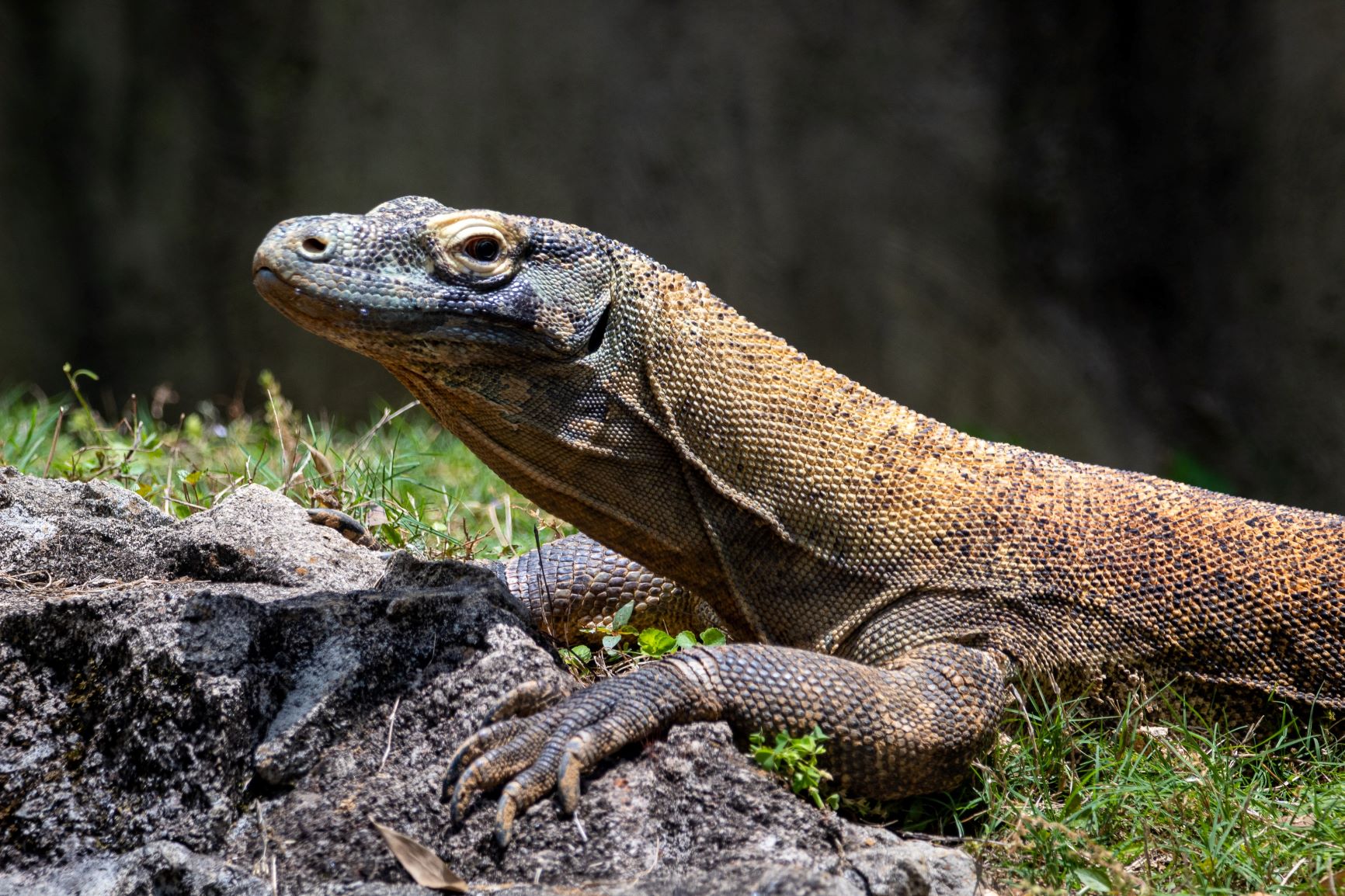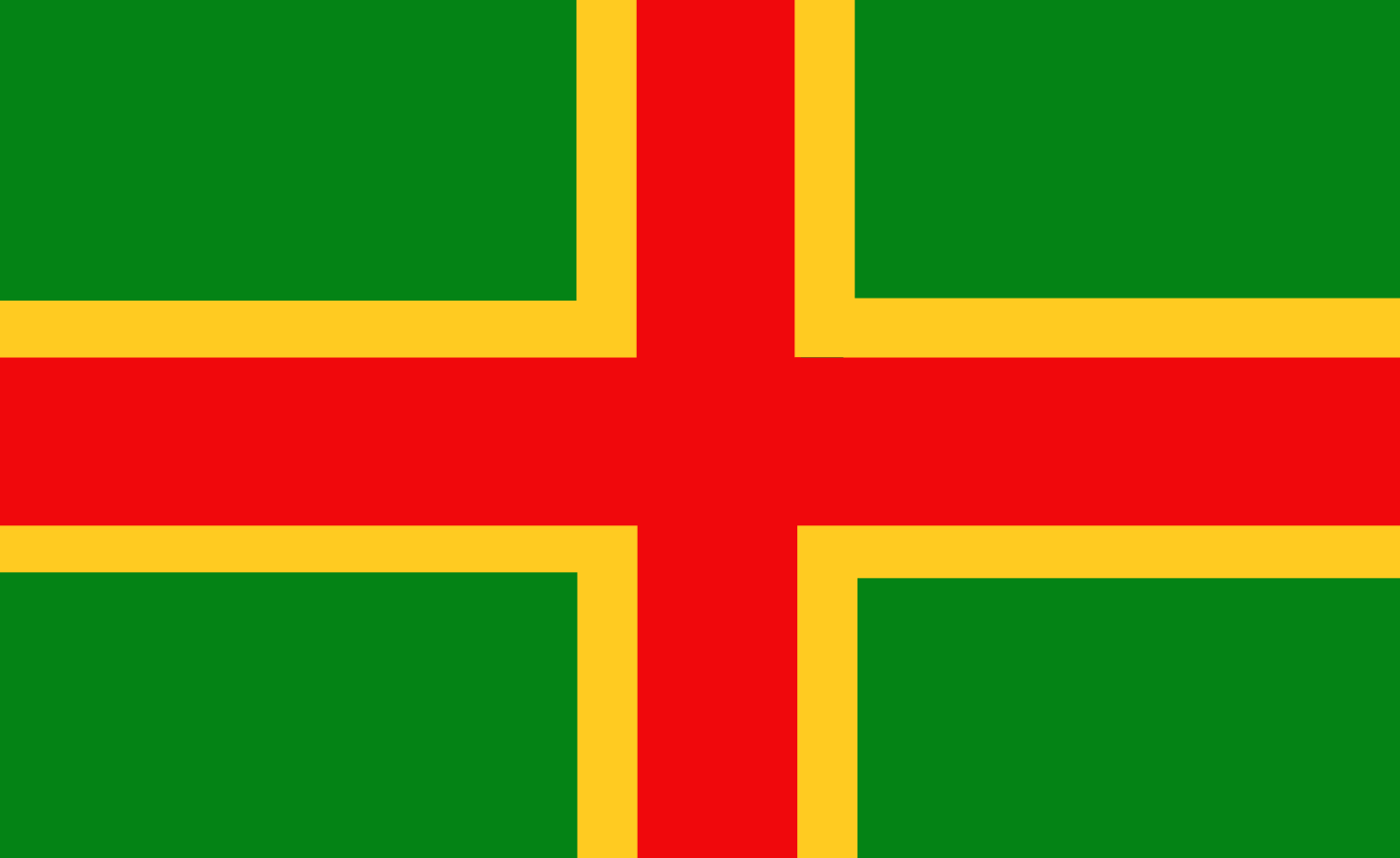Dragons
Dragons are one of the four sapient non-human species that came to exist through Magical Mutation in Nideon's first years. Their name is derived from a giant lizard found in ancient stories, and though they are the least human-like of the non-human species on Nideon, they still bear some resemblance to humans.
Biology
Though all of the earliest depictions of dragons come from Diamondheart, there are two types of dragons--those that were mutated by fire magic and those that were mutated by water magic (more commonly referred to as ice dragons). Though dragons can perform magical workings as any other person with the same magical gift, they are best known for their ability to spit fire, or in the case of ice dragons, water at a variety of temperatures. Aside from magical affinity, fire dragons and ice dragons only differ in color, with fire dragons having hides in warmer colors (yellow, red, and orange) and ice dragons having hides in cooler colors (blue, purple, and sometimes white). Though dragons in stories were typically depicted as having scales, like a snake, in reality, they have tough hides akin to that of a lizard. They also have lizard-like heads and tails.
Unlike humans, dragons have three sets of limbs. The front limbs end in five-toed hands which resemble those of a human, including opposable thumbs. Their back limbs end in long, narrow, five-toed feet that also resemble those of a human. In addition, dragons have two wings that protrude from their shoulder blades and extend the length of their torso and back legs. Recent discoveries of six-legged lizards, such as the Puffer Salamanders of northern Nefrale have brought into question the concept that dragons evolved from humans, with some biologists suggesting they instead evolved from lizards. Others, however, argue this is unlikely as dragons are mammals.
While dragons can walk on their back legs if they choose to, they more commonly walk on all fours. On average, dragons stand five feet at the shoulder, and 2-3 feet higher when standing on their back legs. On average, they live 7 times as long as humans.
History
As dragons themselves have not typically kept written records, histories of dragons are sparse and one-sided. Documents from as early as the 2nd century indicate that dragons in Diamondheart had retreated to less populated areas. Many of the fire dragons had gone to the Far Mountains, with water dragons more typically building communities on the rockier parts of the coast. Early documents also indicated many Een leaders declared the dragons to be demons, which is the most likely cause for the dragons to retreat to isolated communities.
For the next several centuries, the sparse documentation from Diamondheart continues this trend, but sightings from the late 6th century in Xye indicate that dragons quickly began to cover the Southern Continent, though they stayed in hiding. There are multiple letters and reports from sailors spotting winged men, winged horses, and giant lizards, giving rise to folktales that lasted for centuries, until the truth was discovered. These stories are also the first connection of dragons to their legendary counterparts.
By the 11th century, ice dragons were slowly gaining more traction in social circles, and a 1023 ship's log from Diamondheart indicates that they were among some of the first expeditions to Saas, though once in Saas, they again settled mostly away from humans, making homes in the farthest north regions, likely leading to their classification as ice dragons, rather than water dragons.
This movement of dragons through the oceans, however, began their presence on the global stage. While there are some mermish documents speaking of dragons in certain coastal areas of the Southern Continent, namely Diamondheart, it is in the 11th century that they become much more prevalent, and it may have been the growing relations between the mermish and the dragons that led them to interact more with human cultures, with more and more dragons from Saas slowly moving south into Nefrale. By 1282, the Nefralean King created a seat for dragons on the Council of Races, and over the next two centuries, dragons became increasingly less isolated.
While dragons are rarely referred to as demons in Diamondheart today, relations with humans are still somewhat strained. In other countries, however, includein Nefrale, Xye, and parts of Saas, dragons have taken up lives in major cities and are known to live close to humans. Because of dragons' sizes, many dragons still live in dragon communities that are better built to accomodate them, but interact on a regular basis with other people. Nevertheless, there also remain many dragon communities that have little to no relationship with non-dragons. Historically, fire dragons have remained more isolated than ice dragons.
Culture
Though dragons have kept themselves isolated, they have a less homogenous culture than sprites. This is likley because they still maintained some level of interaction with humans, even in the early years. The majority of dragons follow the Een religion, though some have adopted other faiths, especially those who have moved to larger cities outside Diamondheart, and many of their cultural rituals follow those of others who practice the same religions. A high percentage of dragons also hold to certain tennants of Astromythology, though few express an interest in seeking the Homeworld, as members of other races might.
Similarly, most dragons speak a dialect of Imk, though dragons living in cities typically speak whatever the local language is. Some anthropologists believe that the Imk dialect spoken by dragons is actually the oldest known version of the language. Many dragons are multi-lingual, not because they, like sprites, learn languages particularly quickly, but because they have a greater amount of time to learn languages. Even some of the most isolated dragons in Diamondheart speak more than one language, as they have a history of trade with the Thisaazhou, a relationship that likely formed due to both being shunned by religious leaders in Diamondheart.
As dragons themselves have not typically kept written records, histories of dragons are sparse and one-sided. Documents from as early as the 2nd century indicate that dragons in Diamondheart had retreated to less populated areas. Many of the fire dragons had gone to the Far Mountains, with water dragons more typically building communities on the rockier parts of the coast. Early documents also indicated many Een leaders declared the dragons to be demons, which is the most likely cause for the dragons to retreat to isolated communities.
For the next several centuries, the sparse documentation from Diamondheart continues this trend, but sightings from the late 6th century in Xye indicate that dragons quickly began to cover the Southern Continent, though they stayed in hiding. There are multiple letters and reports from sailors spotting winged men, winged horses, and giant lizards, giving rise to folktales that lasted for centuries, until the truth was discovered. These stories are also the first connection of dragons to their legendary counterparts.
By the 11th century, ice dragons were slowly gaining more traction in social circles, and a 1023 ship's log from Diamondheart indicates that they were among some of the first expeditions to Saas, though once in Saas, they again settled mostly away from humans, making homes in the farthest north regions, likely leading to their classification as ice dragons, rather than water dragons.
This movement of dragons through the oceans, however, began their presence on the global stage. While there are some mermish documents speaking of dragons in certain coastal areas of the Southern Continent, namely Diamondheart, it is in the 11th century that they become much more prevalent, and it may have been the growing relations between the mermish and the dragons that led them to interact more with human cultures, with more and more dragons from Saas slowly moving south into Nefrale. By 1282, the Nefralean King created a seat for dragons on the Council of Races, and over the next two centuries, dragons became increasingly less isolated.
While dragons are rarely referred to as demons in Diamondheart today, relations with humans are still somewhat strained. In other countries, however, includein Nefrale, Xye, and parts of Saas, dragons have taken up lives in major cities and are known to live close to humans. Because of dragons' sizes, many dragons still live in dragon communities that are better built to accomodate them, but interact on a regular basis with other people. Nevertheless, there also remain many dragon communities that have little to no relationship with non-dragons. Historically, fire dragons have remained more isolated than ice dragons.
Culture
Though dragons have kept themselves isolated, they have a less homogenous culture than sprites. This is likley because they still maintained some level of interaction with humans, even in the early years. The majority of dragons follow the Een religion, though some have adopted other faiths, especially those who have moved to larger cities outside Diamondheart, and many of their cultural rituals follow those of others who practice the same religions. A high percentage of dragons also hold to certain tennants of Astromythology, though few express an interest in seeking the Homeworld, as members of other races might.
Similarly, most dragons speak a dialect of Imk, though dragons living in cities typically speak whatever the local language is. Some anthropologists believe that the Imk dialect spoken by dragons is actually the oldest known version of the language. Many dragons are multi-lingual, not because they, like sprites, learn languages particularly quickly, but because they have a greater amount of time to learn languages. Even some of the most isolated dragons in Diamondheart speak more than one language, as they have a history of trade with the Thisaazhou, a relationship that likely formed due to both being shunned by religious leaders in Diamondheart.
Affinity with Lizards
 by Joshua
Many dragons feel a strong affinity with lizards, due to their shared physical characteristics. It is also possible that early conflicts with humans led dragons to assoicate more with other animals. Dragons are especially attached to the Puffer Salamanders that live near the Singing Sea and the similar six-legged lizards found in the caves of Igbi and Lowoni. Some people even suspect that because these lizards are six-limbed, the dragons have a historical connection to them, at least as strong as that of humans.
by Joshua
Many dragons feel a strong affinity with lizards, due to their shared physical characteristics. It is also possible that early conflicts with humans led dragons to assoicate more with other animals. Dragons are especially attached to the Puffer Salamanders that live near the Singing Sea and the similar six-legged lizards found in the caves of Igbi and Lowoni. Some people even suspect that because these lizards are six-limbed, the dragons have a historical connection to them, at least as strong as that of humans.

by Joshua
Geographic Distribution



Comments